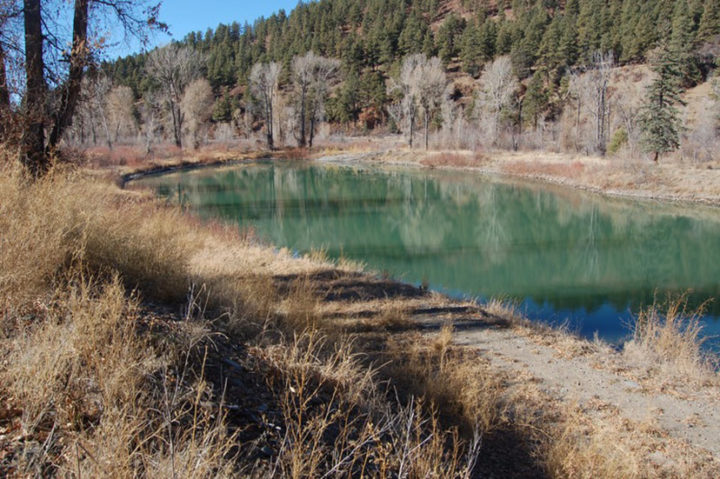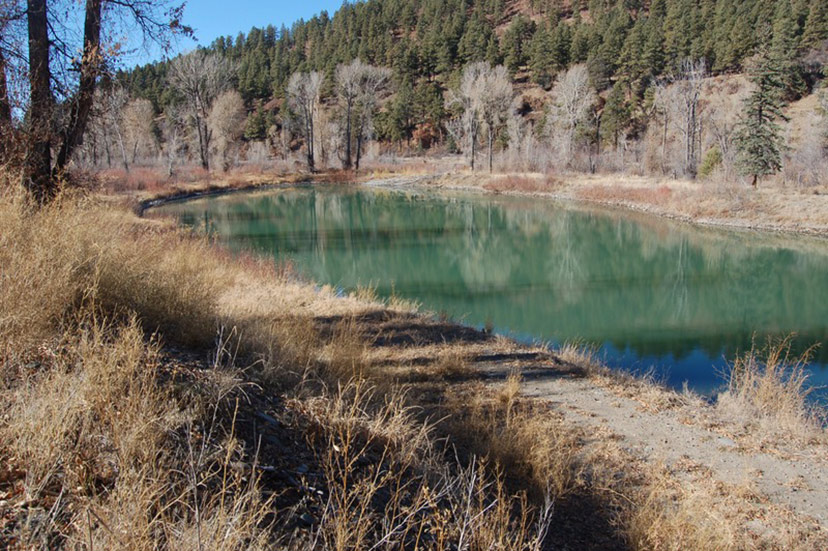A few days ago, a Daily Post reader sent me some information about a gravel pit proposed for the Dutton Ranch — a massive holding of perhaps 2,500 acres surrounding Stevens Reservoir, east of Piedra Road, and pretty much due east of Lake Hatcher.
The ranch was purchased from Thomas Smith last summer, by Silesia Properties LP, for $9.7 million.
Trivia: Silesia is an historical region of Central Europe that lies mostly within Poland, with small parts in the Czech Republic and Germany, covering about 15,400 square miles and with population estimated at around 8 million. Silesia is split into two main subregions, Lower Silesia to the west and Upper Silesia to the east. Silesia has a diverse culture, including architecture, costumes, cuisine, traditions, and — in Upper Silesia — the Silesian language.
The new proprietors of the ranch are Ronnie and Terry Urbanczyk, at least one of whom presumably has ancestral ties to Silesia. The mining operation proposal was submitted to Archuleta County by Durango-based C&J Gravel Products and Wasteline Inc..
I was encouraged by my Daily Post reader to share information about this proposed gravel pit.
It’s a complicated issue, involving property rights, mining regulations, property values, the cost of government, the deterioration of our local roads, noise, and so many other factors.
We’ve published a few stories, over the past 15 years, about gravel, and gravel pits.
Recently, in November 2019, I had the pleasure of accompanying long-time Pagosan Kathy Weber on a tour of a completed mining operation north of downtown Pagosa. The material that had been mined, over several years, was gravel. Or rather, the special type of rock that can be crushed into gravel by large, noisy machines running on fossil fuel.
Not all rock meets the necessary criteria. In fact, I would guess (based on very little research) that 99% of the rock available in Archuleta County is the wrong kind.
This particular gravel mining operation — Weber Sand & Gravel — seems to have avoided the political controversy that sometimes arises when a new gravel pit application is submitted to the state and county.
I was touring the mining site as a member of the San Juan Water Conservancy District (SJWCD) Board of Directors. SJWCD was (and still is) joint owner of the property where the mine was located — jointly with Pagosa Area Water and Sanitation District (PAWSD). (Disclosure: This article does not necessarily reflect the views of the SJWCD Board.)
Also on the tour was Lucas West, Environmental Protection Specialist with the Colorado Division of Reclamation, Mining and Safety, who had driven down from Grand Junction to verify that the Weber family had fully completed the site reclamation process to the standards required by the state government.
To judge by Mr. West’s comments during the visit, the Webers had done an outstanding job with the site restoration. Justin Ramsey, PAWSD District Manager and a licensed civil engineer, was also on the tour and agreed with that general assessment.

A good-sized, man-made pond was basically all that remained from the Weber family’s gravel mining operation. If you didn’t know it was a former gravel pit, and if you didn’t know much about gravel mining (which I don’t), you might think this was a natural setting, rather than a reclaimed gravel pit. Wild grasses and shrubs grew all around the lake. The sound of the San Juan River could be heard nearby. One would definitely describe the setting as ‘peaceful’.
During the tour, the other people in the party — the people who actually know something about gravel mining — chatted in a friendly way, and some of the comments related to the gradual disappearance of commercial gravel mining in Archuleta County. I recall someone saying something like:
“The people who are moving to Pagosa Springs don’t understand how important gravel is.”
Back in 2008, PAWSD and SJWCD had purchased this particular 20-acre parcel — plus another 640 acres — for $10 million, as the proposed ‘Dry Gulch Reservoir’ site. During the sale, the Weber family had negotiated the right to continue mining gravel on the property for 15 years, or until work began on the reservoir.
Work never began on the reservoir.
An even larger gravel mining operation, also run by the Weber family, is located on the main section of the PAWSD/SJWCD-owned Running Iron Ranch, across the highway and up the hill. I have no idea how much gravel the Webers have been able to produce during the 14 years since the Dry Gulch purchase, and even less idea how much the gravel may have been worth.
$100,000? $1 million? I really have no idea. It didn’t seem to have been a concern in 2008, when PAWSD and SJWCD bought the property.
As we stood beside the pond, I asked Ms. Weber if she knew how many tons of gravel her family had excavated from that pit. She said she didn’t know.
I had an interview, a few years back, with Archuleta County’s then-Public Works Director Bob Perry, and asked how many tons of gravel the County uses when repairing a worn-out gravel road, and I was told that, typically, we need about 3,500 tons of crushed gravel to treat a mile of road. We pay $11 a ton for good quality gravel, he said… so we might estimate that a mile of road requires about $38,500 worth of gravel. How often?
Every couple of years, on a busier road?
If the price of gravel were to increase by, say, 25 percent… well, presumably the County would need to increase our Road & Bridge budget for gravel by 25 percent, just to stay even.
“Staying even” would mean, in Archuleta County, “getting further behind.”
It may be true that the people who are moving to Pagosa Springs don’t understand how important gravel is.
For example. If we have 300 miles of gravel roads in Archuleta County, and each mile requires a regular treatment of new gravel amounting to 3,500 tons, that’s a lot of gravel. More than 1 million tons, according to my pocket calculator, every couple of years.
Where does a community like Archuleta County find 1 million tons of gravel for its roads, on a continuing basis?

